American Experiment modeling finds EPA’s Carbon Rule would cause blackouts in MISO, cost $246 billion
Center of the American Experiment has modeled the impacts of the Biden administration’s new Environmental Protection Agency (EPA) rules regulating carbon dioxide emissions from power plants and determined that these regulations would cause massive rolling blackouts in the Midwest. Preventing these blackouts would increase the cost of complying with the regulations by $246 billion through 2055.
The study, which was commissioned by the State of North Dakota, examined the reliability and cost impacts of the Biden EPA’s regulations on the regional electric grid to which Minnesota belongs, the Midcontinent Independent Systems Operator (MISO), and includes 14 other states.
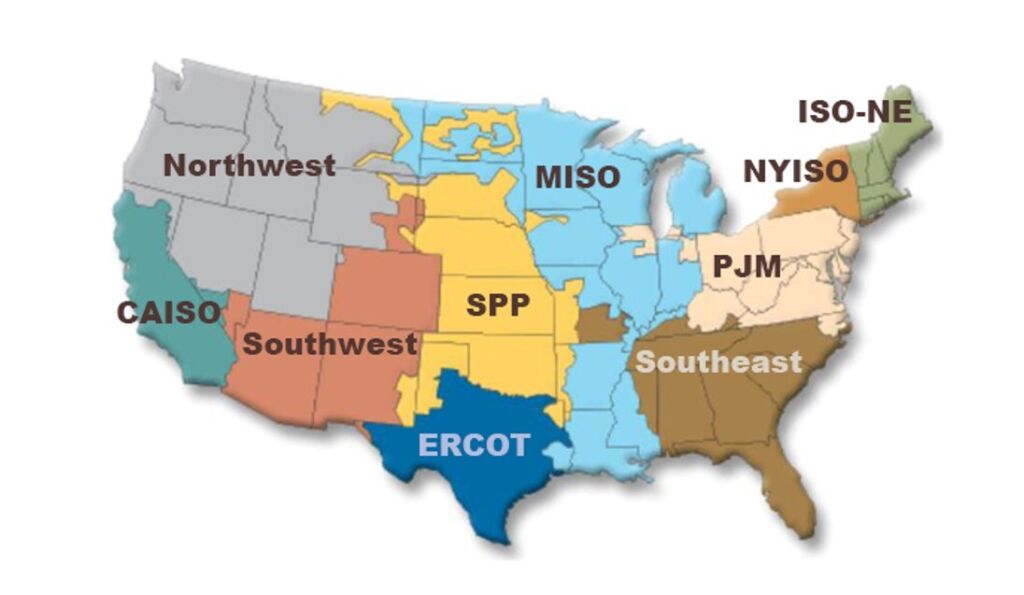
The findings of the study were submitted to the EPA yesterday as part of a formal comment period. You can read our full comments by clicking here or read our “one-pager” summarizing our comments by clicking here.
What did we find, and why does it matter?
The EPA is attempting to fundamentally transform the entire U.S. electric grid by imposing these new rules on power plants, which we refer to as the proposed Section 111 rules in our comments. The regulations are considered to be the spiritual successor of the Obama administration’s Clean Power Plan, which was halted by the U.S. Supreme Court.
When EPA attempts to impose new rules on power plants, it is required to justify the regulations from a scientific and economic standpoint. This justification is called a “Regulatory Impact Analysis,” or RIA, and the benefits of the rules must exceed the costs.
However, EPA is using a litany of bad assumptions in its RIA to justify the regulations. Alarmingly, these assumptions do not account for how the regulations will undermine the reliability of the electric grid in the MISO region.
EPA’s Baseline is Unreliable
The biggest mistake EPA makes in its justification for the rule is that it assumes most of the changes to the U.S. electric grid between now and 2055 will be due to the subsidies in the Inflation Reduction Act (IRA), not the regulations on carbon dioxide. These subsidies are baked into EPA’s modeling in its “Post-IRA Base Case.”
For example, a study by the U.S. Chamber of Commerce found that EPA assumes 98.5 percent of the emissions reductions that occur from 2022 through 2040 would be driven by the IRA changing the power plant mix, and only 1.5 percent would be due to the proposed regulations on carbon dioxide emissions, which you can see in the graphic below.
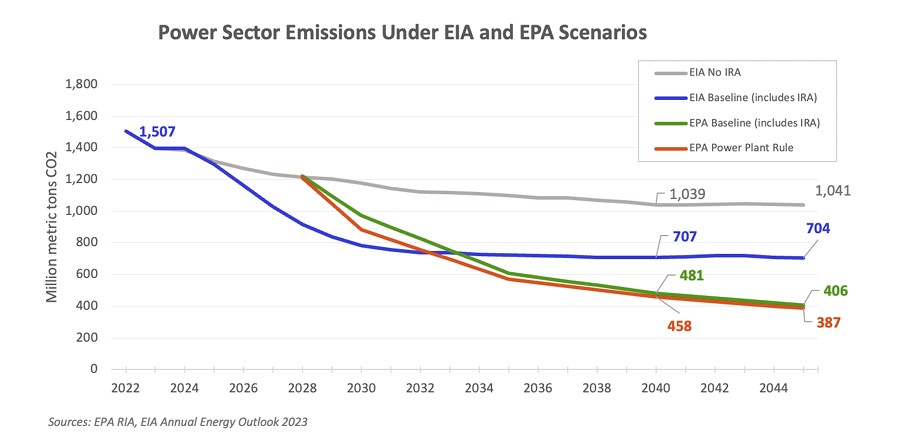
Even though EPA is assuming that the IRA, and not the EPA’s new carbon dioxide regulations, will drive a massive shift away from coal plants toward wind, solar, and battery storage, EPA never even attempted to model the reliability of its Post-IRA base case; it simply assumed it is reliable.
Instead of looking at the reliability of the entire grid, EPA only examined the difference between the Post IRA Base Case and the impact of the regulations, which it claims are small. In doing so, EPA committed the regulatory equivalent of studying the structural integrity of the top floor of a 100-story building without doing so for the preceding 99 floors.
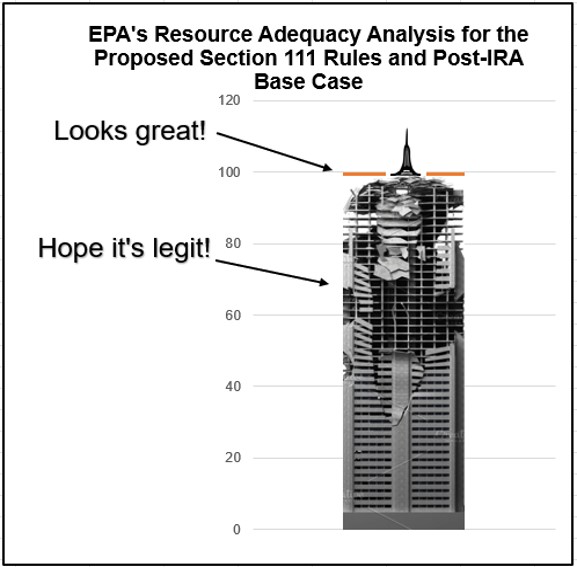
Our analysis measured the reliability of the entire building, in this case, the entire modeled MISO grid in EPA’s assumptions, and we found that the grid EPA is projecting in the future would not be able to keep the lights on, resulting in massive rolling blackouts in the region.
EPA’s unreliable MISO grid
EPA assumes big changes to the MISO grid resulting from the IRA and the carbon dioxide regulations, which you can see in the graph below. EPA assumes the MISO grid will phase out coal by 2040, and the vast majority of this coal capacity would be replaced with wind, solar, some battery storage, and combustion turbine (CT) natural gas plants.

To conduct our reliability analysis, American Experiment compared EPA’s modeled power plant capacity portfolio (from the figure above) to historical hourly electricity demand in MISO and hourly wind and solar capacity factors in 2019, 2020, 2021, and 2022 to see if EPA’s modeled grid could meet electricity demand for every hour of every day. Our analysis determined that EPA’s modeled MISO grid would not be able to keep the lights on, resulting in blackouts, some of them massive.
For example, one blackout would occur in January of 2040 and result in 26,000 megawatts (MW) of capacity shortfalls, shown in red in the graph below. This accounts for 19.5 percent of electricity demand at the time of the blackout, which means one in every five homes in the region would experience a rolling power outage.
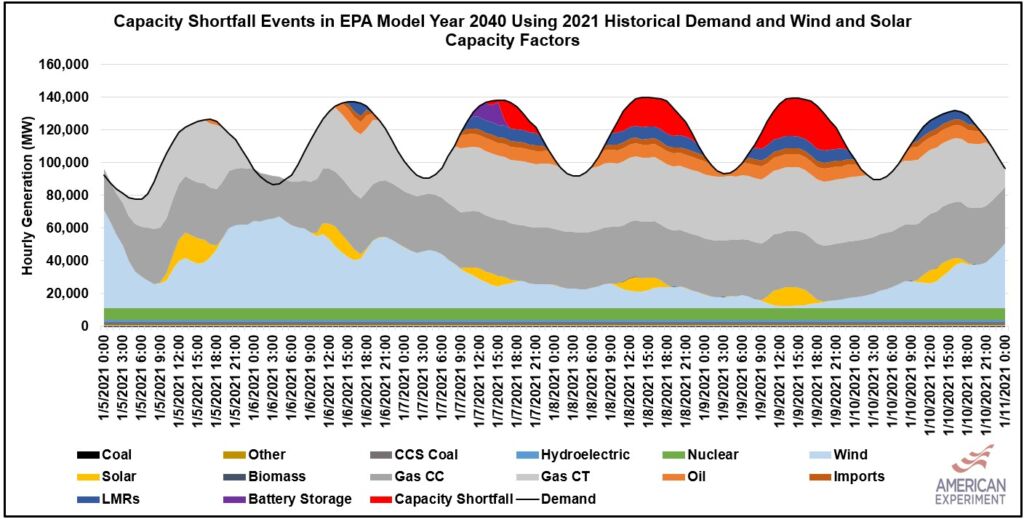
For context, a 26,000 MW blackout would essentially shut off power to the entire states of Minnesota and Wisconsin at the same time.
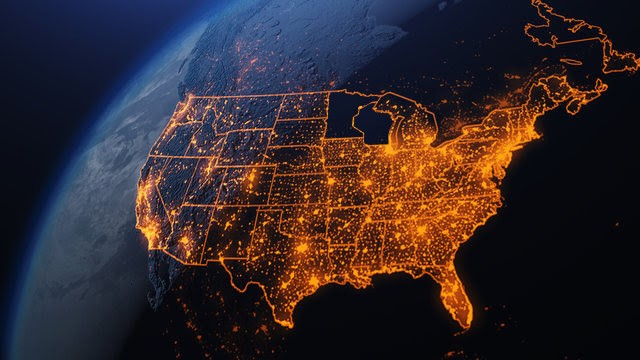
EPA’s modeled MISO grid produces massive blackouts because the agency is relying on unreliable wind and solar generators to meet peak electricity demand. The agency also overestimates the reliability of wind and solar, and as a result, there is not enough reliable power plant capacity on the grid to keep the lights on.
Preventing the blackouts will cost an additional $246 billion
Preventing massive blackouts on the MISO system will require much more power plant capacity than EPA is estimating. The graph below shows how much additional capacity would need to be built in each of EPA’s modeled years to prevent rolling blackouts. By 2055, MISO would need 603,000 MW of capacity to prevent blackouts, which is about 32 percent more than the 457,000 MW EPA estimated would be needed in the region.

Building this capacity while still meeting EPA’s emissions targets will increase the cost of complying with the regulations by $246 billion for electricity ratepayers, which is an annual compliance cost of $7.7 billion. For context, this is more than EPA’s estimated annual net benefits for the entire country, which it estimates to be $5.9 billion. Building enough capacity to prevent blackouts would also increase the cost to taxpayers by $93 billion in additional IRA subsidies.
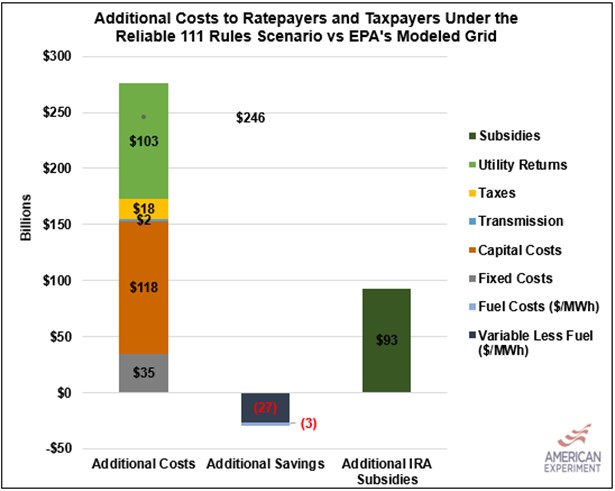
EPA does not appear to have the expertise necessary to enact such a sweeping regulation on the American power sector. The most glaring shortcoming of EPA’s rulemaking was the agency’s failure to conduct a reliability analysis of the modeled MISO grid in its Post-IRA Base Case. By neglecting these analyses, EPA has mandated major changes to the U.S. electric grid without examining the foundation upon which the new regulations are based.
EPA claims that its regulations will not impact grid reliability, but the agency’s modeled generation mix cannot prevent blackouts while hindcasting observed historical conditions. Therefore, we should have no confidence in its assurances that it will have no impact on electric reliability in the future.